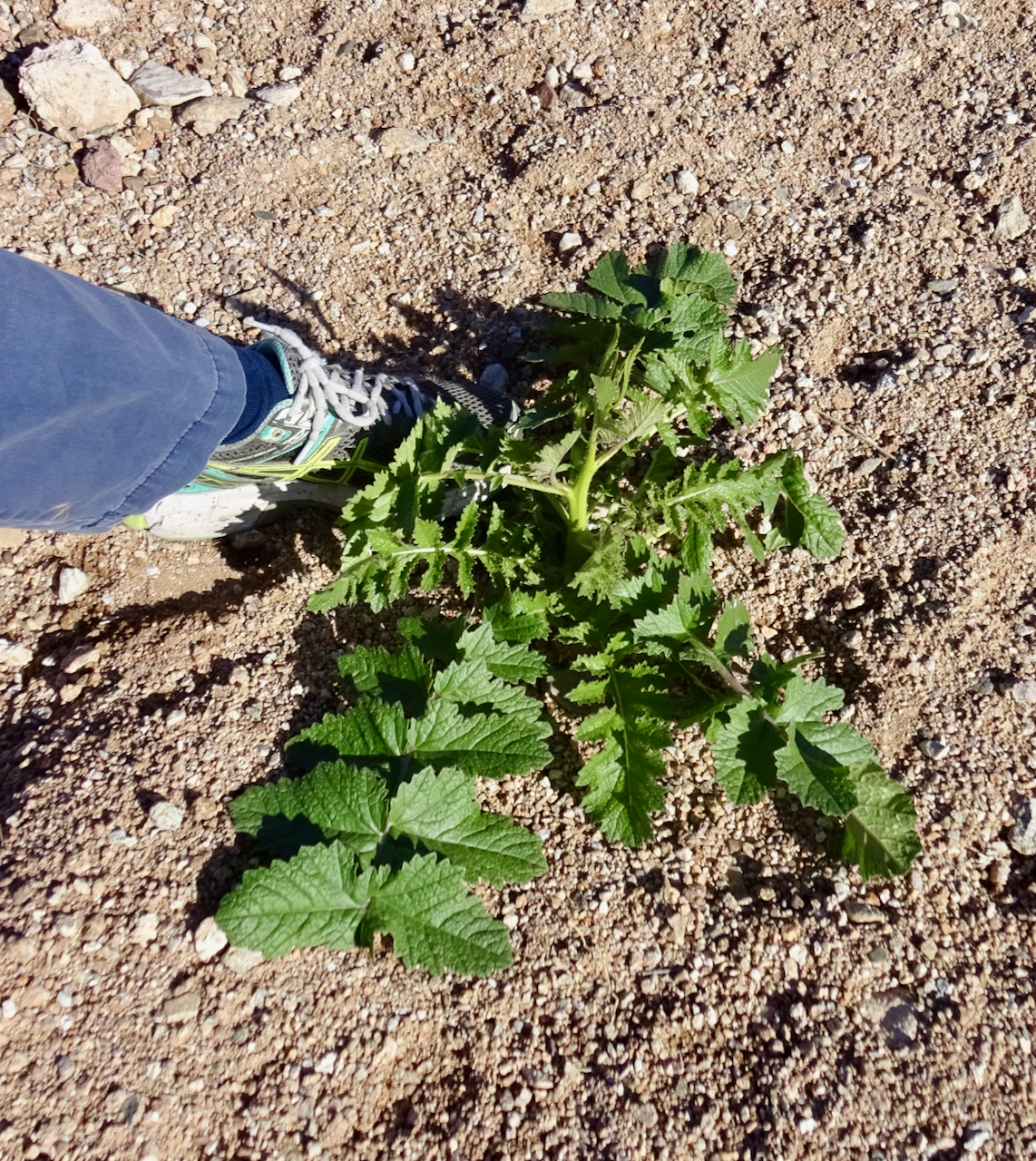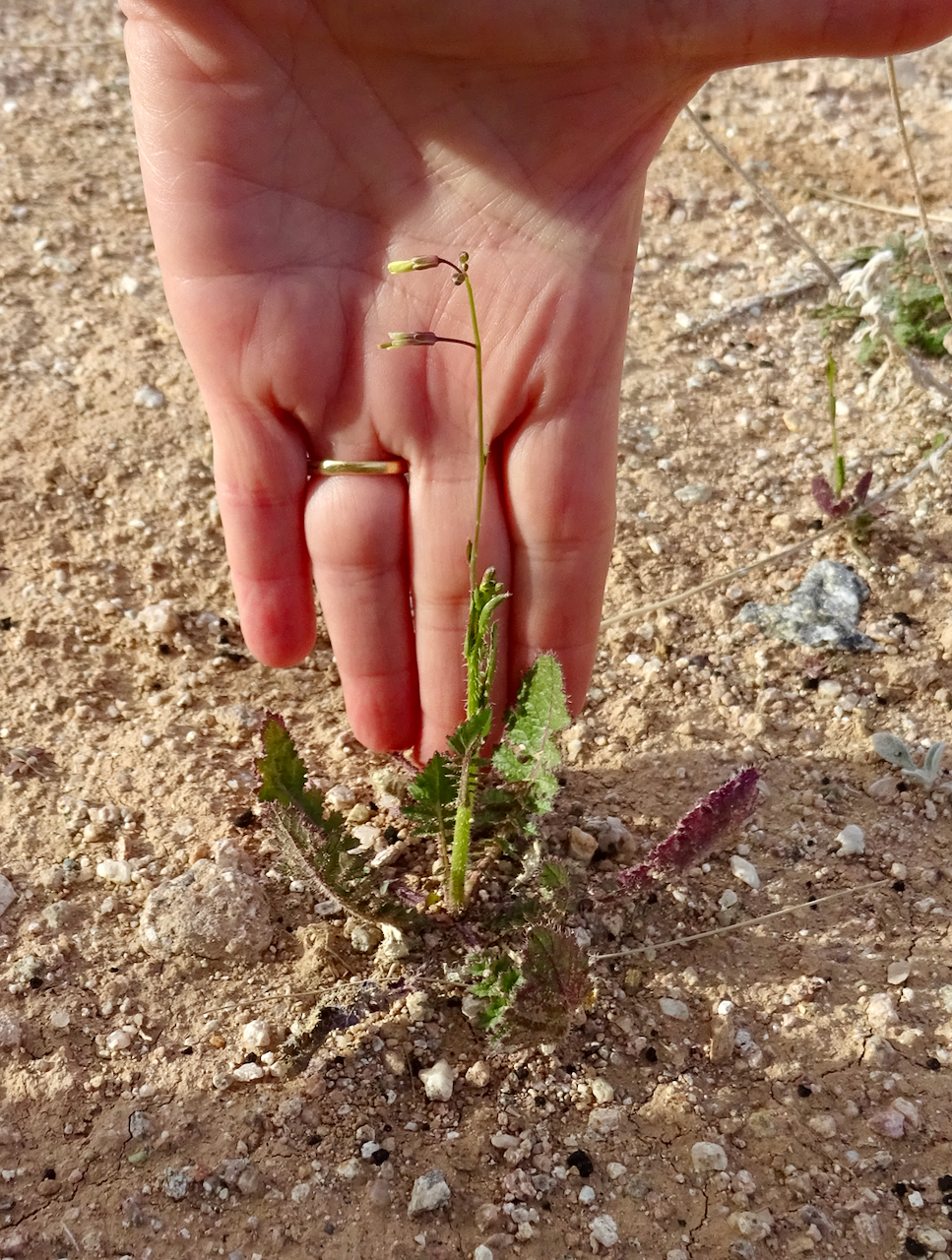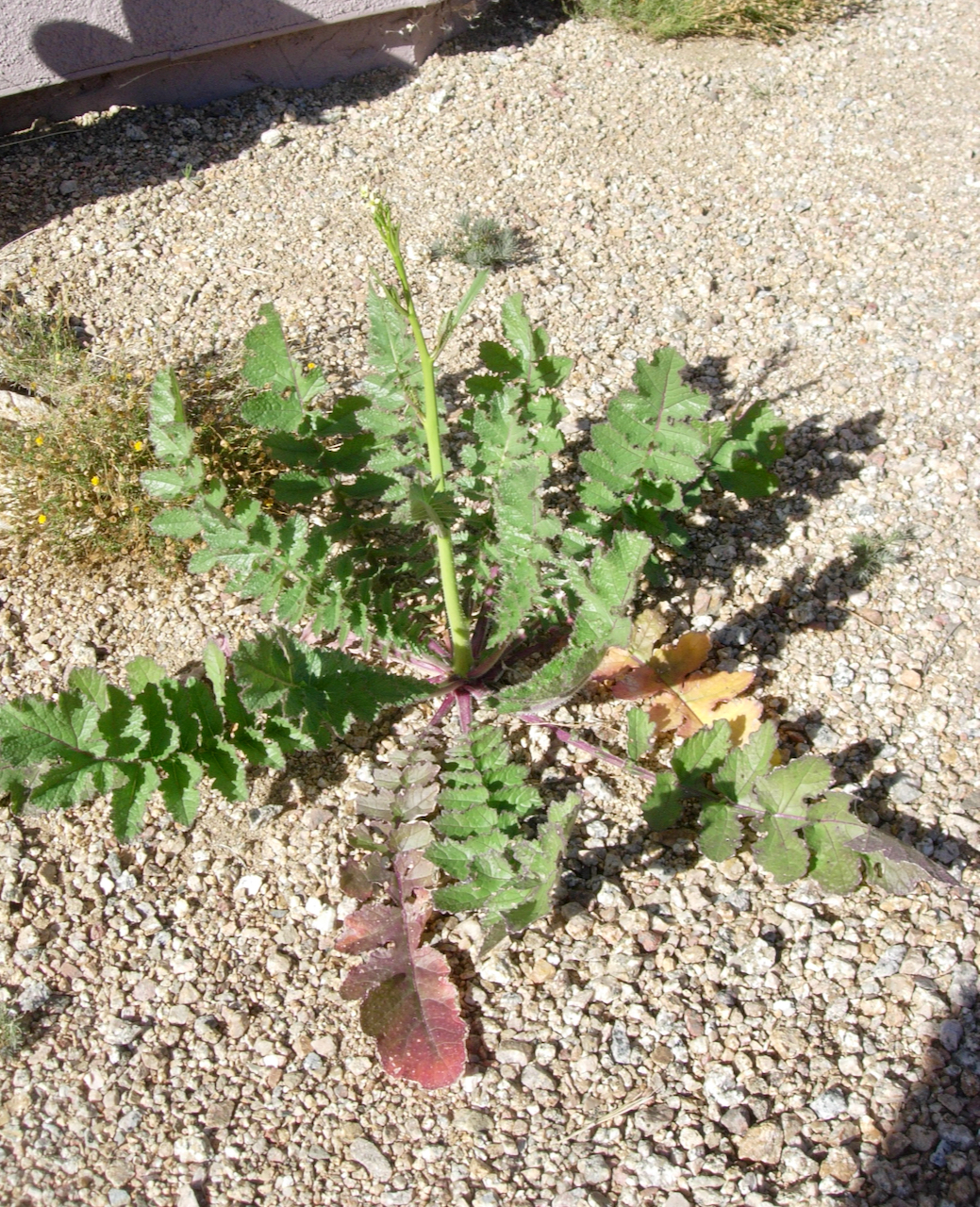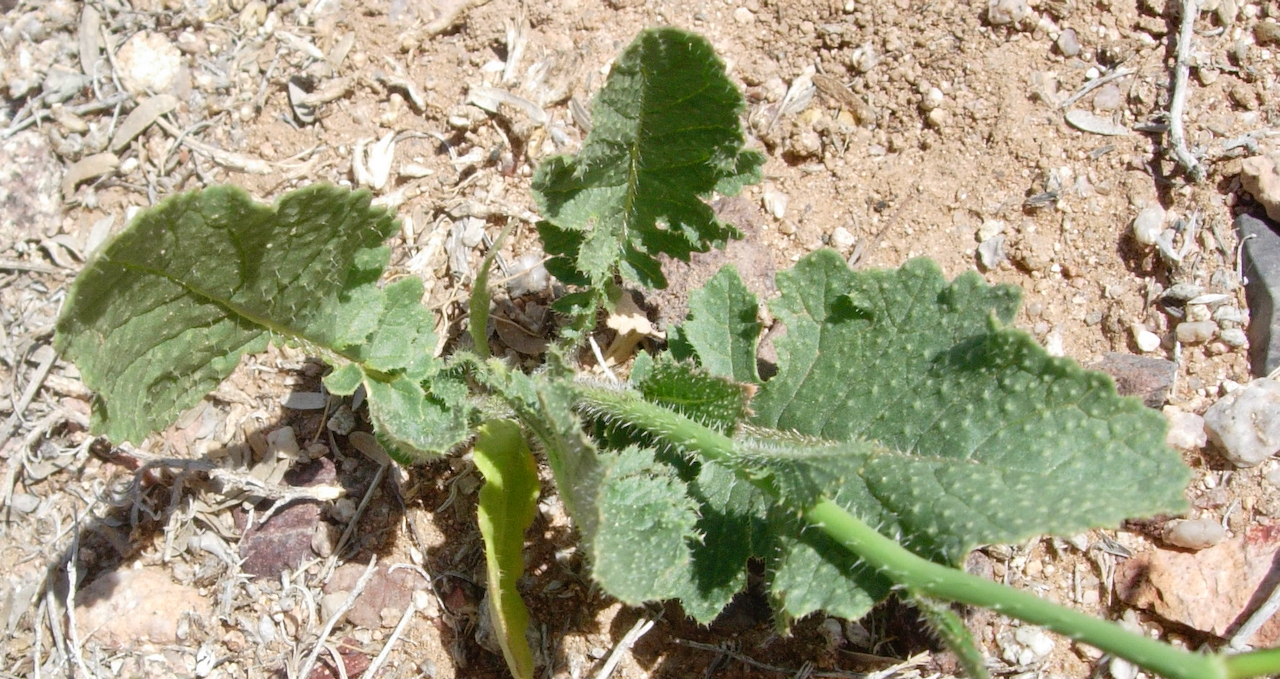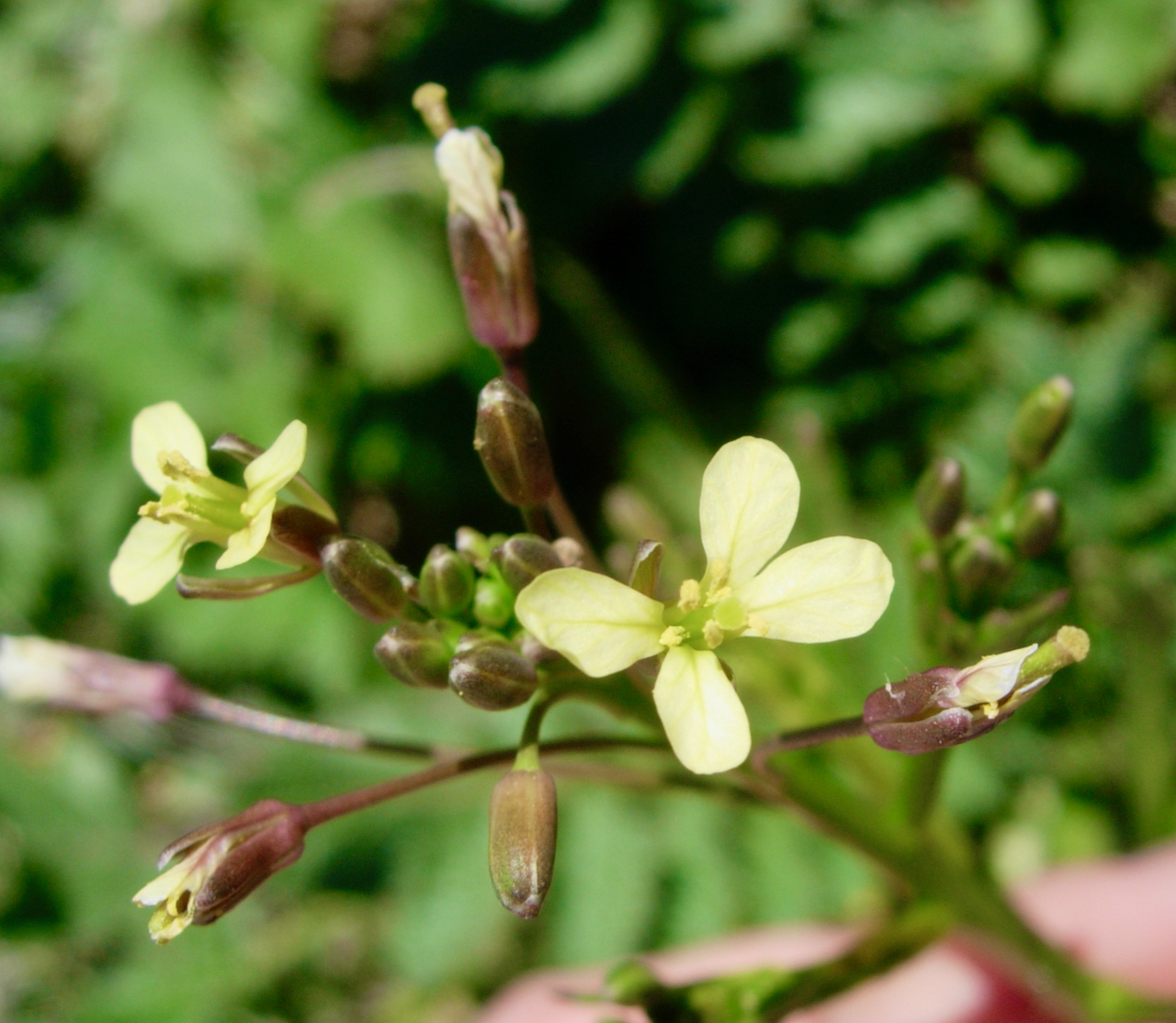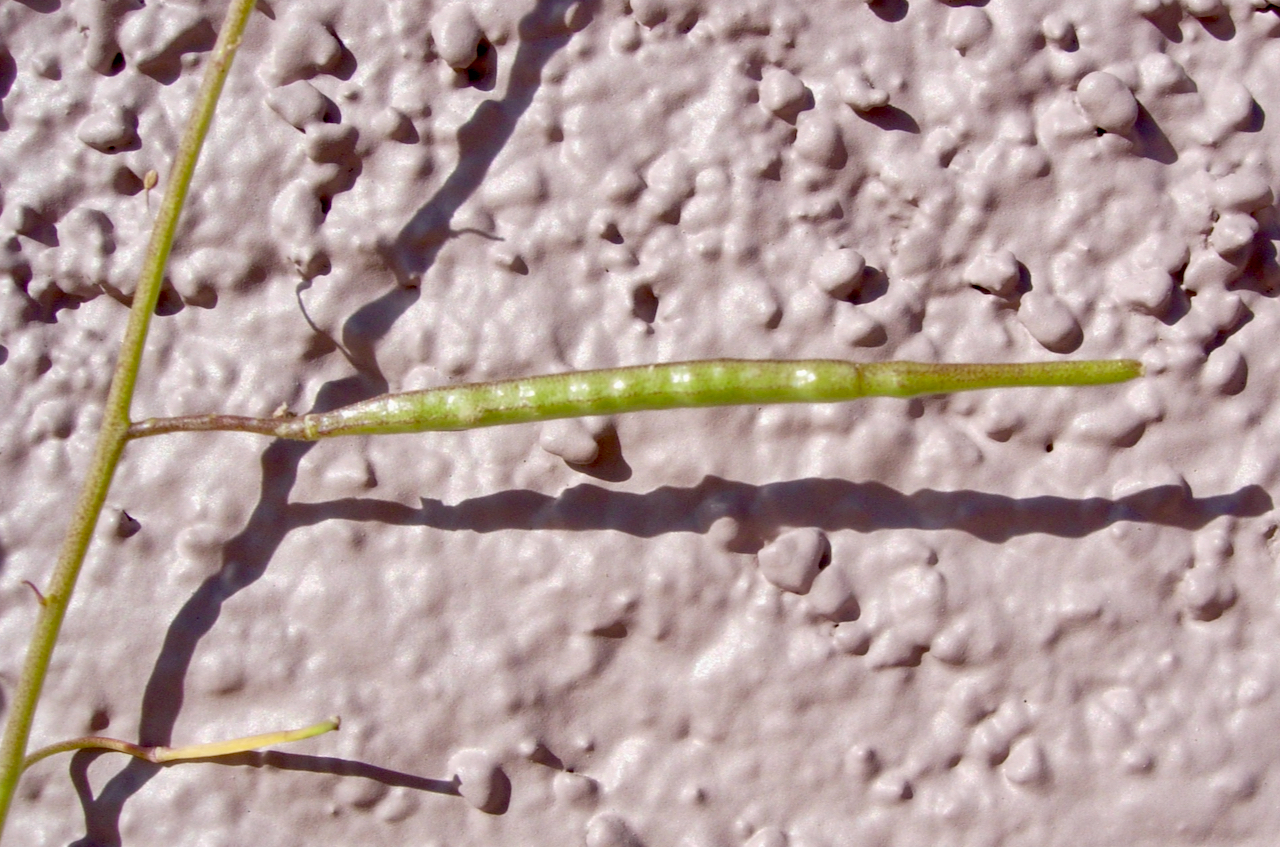Sahara Mustard
Brassica tournefortii
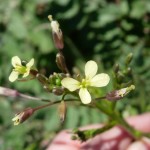
This is an INVASIVE PLANT!
Saraha mustard is native to the Mediterranean region. It was introduced into southern California in the 1920s and has since spread to Arizona, New Mexico, Texas, Utah, and Nevada. Though considered rare in Tucson in the 1980s, it is now widespread and locally common in the metropolitan area and surrounding suburbs.
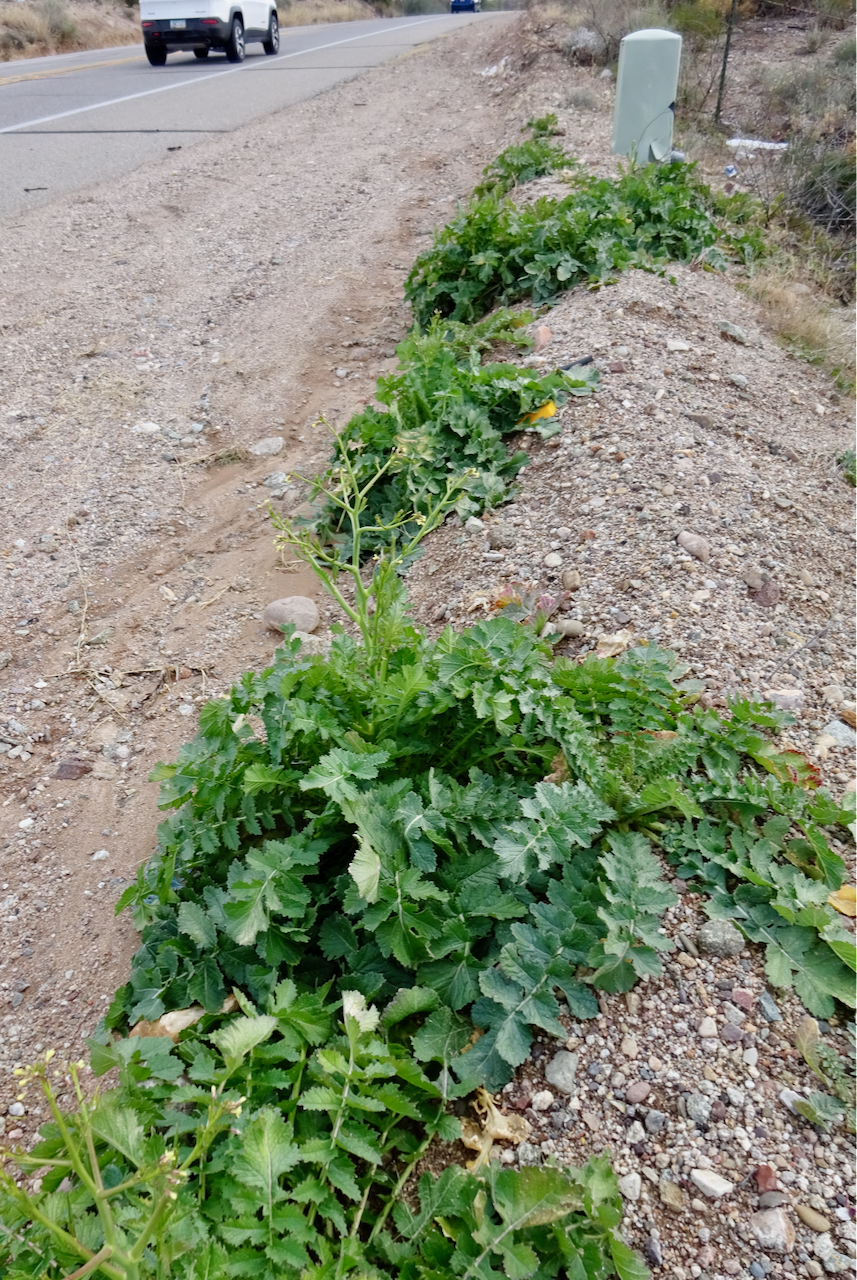
Sahara mustard, a winter annual, is initially a weed of disturbed spaces and roadsides. Each Sahara mustard plant can produce up to 16,000 seeds. The seeds germinate quickly in cool weather (61-90° F) after rainfall, blooming as early as December or January. In a wet year, plants can span 3 feet. In dry years, plants may flower when only a few leaves are present. Large stands of Sahara mustard can remove enough water from the soil to threaten the survival of annuals and even surrounding shrubs.
Sahara mustard can be controlled before it gets a foothold by pulling small plants before they flower and produce seed.
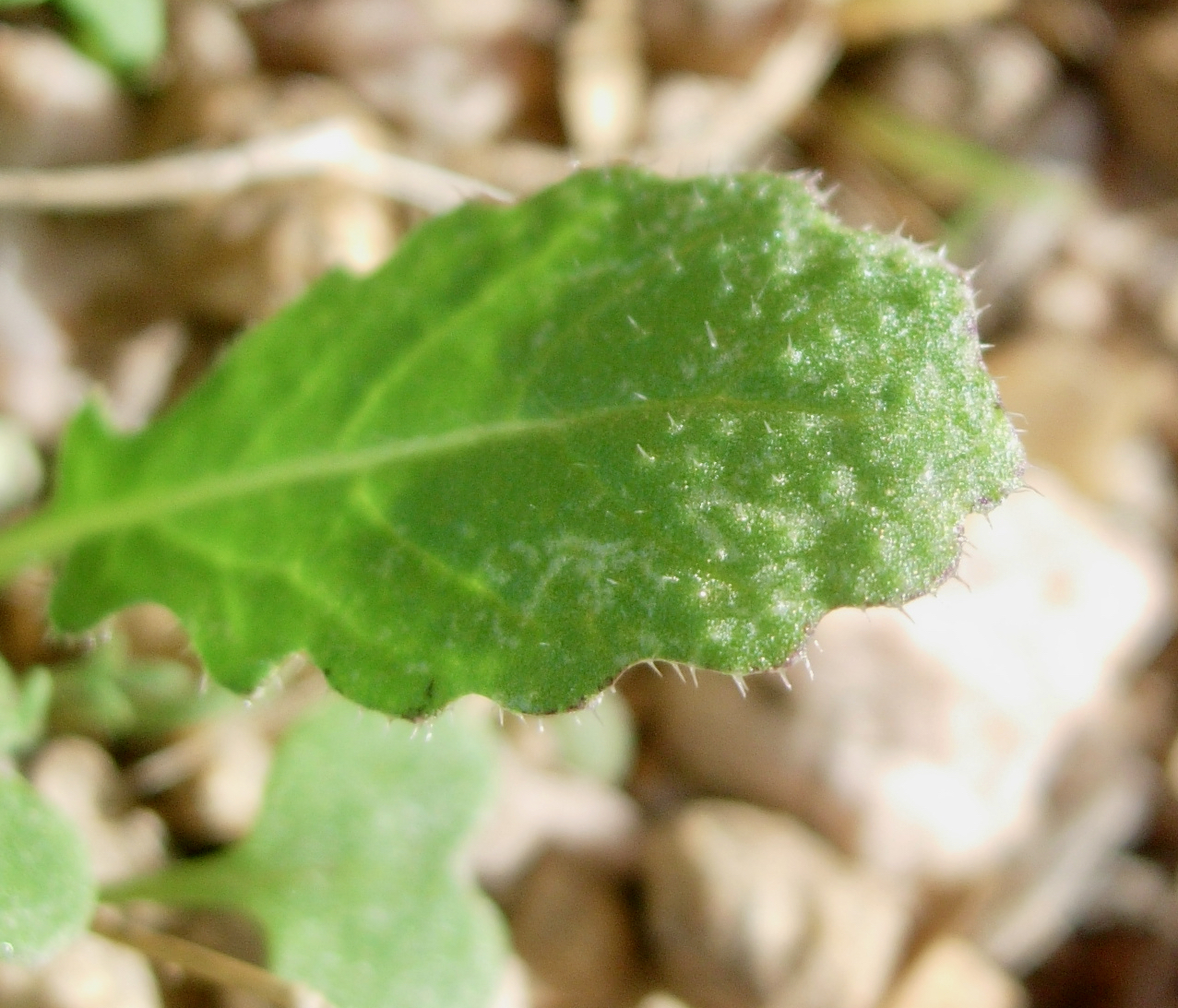
To identify a plant as Sahara mustard, look at the leaves. They will appear to have small bumps all over their surface (where small hairs are attached) and will feel rough to the touch. Some spring-flowering native plants have leaves or form that may remind you of Sahara mustard. For examples, check out the links below. Before pulling a plant, look at the leaves and feel them also. Are they rough with bumps? Then pull it out!
More Information
Information from Sonoran Desert Cooperative Weed Management Area
Information from Center for Invasive Species Research
Information from USDA Forest Service
Academy Village BOLO on Sahara mustard
Map of distribution in US (pink=plant is considered noxious weed, blue=plant present and not native)
Technical botanical description from SEINet
ID Characteristics
This plant is in the Brassicaceae - the mustard family.
Sahara mustard can grow to 3 feet wide and the flower stalks can reach to 3 feet. Plants in dry areas/years are smaller and can flower after only a few leaves have formed. The seeds germinate in cool weather, as early as Nov/Dec in the Tucson area.
Leaves are found mostly at the base of the plant though the flower stalk will have a few alternate leaves. The leaves are oblong, a foot or more in length on large plants, and divided into several lobes. Look for the small bumps/dots, where prickly hairs are attached to the leaves. Leaves feel rough. There will also be hairs on the flower stalk (see second photo above).
Flowers of Sahara mustard have 4 pale yellow petals that form an X (not a +). Flowers are only about 1/4 inch across. In the photo you can see flower buds, two open flowers and three faded flowers with fruit starting to form. Even very small plants, only and inch or two high and wide can flower and produce seed (see photo above).
The seed pod is long and slender, up to 2.5 inches long. Many plants in the mustard family have similar pods. Look for the elongated “beak” at the end of the pod to distinguish Sahara mustard from our native mustards. The beak is to the right in this photo.
